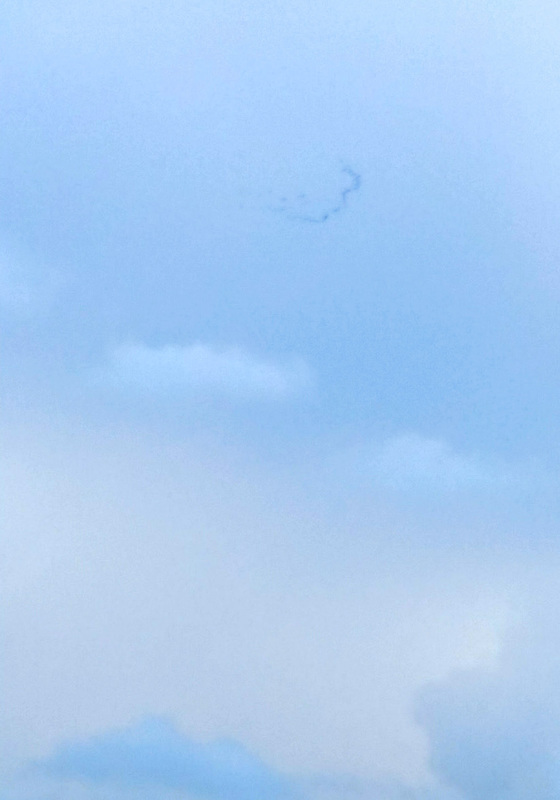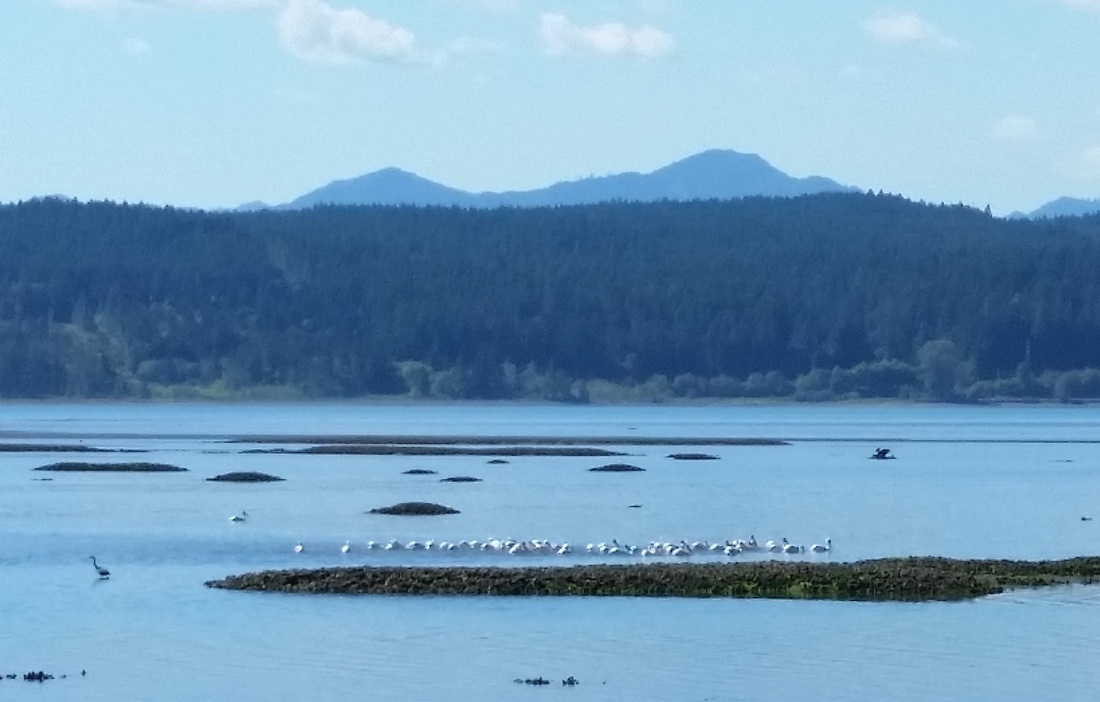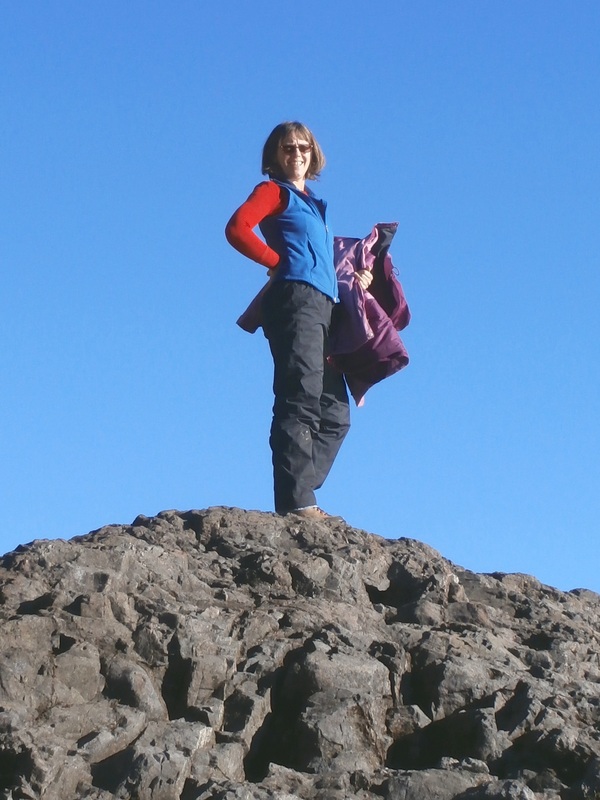|
I prayed in the hospital chapel with my prayer partner Tuesday afternoon, and was sleeping on her couch overnight (cat-sitting), when I had a dream that filled me with truth just before I woke.
In my dream, I was milling with a city-sized crowd doing nothing in particular, when a newly cast shadow fell over the sky, and we all looked up. High in the air, there appeared to float a human-sized moth, dressed in black. The moth began to flap its black wings, and with each beat, a cloud of gray emitted, cloaking the sky until the light was completely eclipsed. Soon all of us on the ground scattered to hide. I crawled inside a small cave carved into a hillside. Through a tiny gap in the rocks at ground level, I stared out as my world emptied of people and then disappeared below a thick black shroud. Terrified, we waited for worse. Time passed and all was still. Though not alone in the cave, I was alone in my decision to come out from hiding. I worked my way from the cave and stood by myself on a lawn. Then I raised my arms, lifted my chin, and levitated into the opaque sky. As I travelled up into the blackness, the darkness around the world slowly cleared, and soon I began to fly in earnest, arcing and sweeping across the brilliant blue sky dotted with wispy white clouds, becoming a spectacle is noticeable as the moth. But the moth was nowhere to be found. When the sky opened completely, I swooped back toward the cave and touched down on solid ground. People I knew and loved gathered round. “I didn’t know you could fly like that,” they said, still frightened and shivering. Neither did I,” I said, “though I’ve been practicing.” Then I took off again, in search of a place I was certain was out there—a place where others, like me, were defying the darkness. It wasn’t flying, exactly, that I’d been practicing—it was stepping out into the unknown. The unknown, that for me, used to be synonymous with danger. For decades, I lived trapped under the cloak of fear, believing life was always going to get worse, believing that shrinking small and keeping still would save me. Though, in truth, I finally realized, hiding suffocated me. So I began practicing a different way of being in the world. In my dream I flew straight through fear because fear could no longer scare me into immobility—it no longer had the power to keep me hidden, hunkering down in misperceived safety, waiting for trouble to pass. Flying is stepping forward, rising to meet risk, learning to hover and dive, through trouble and joy. Flying is allowing ourselves to surrender our masks and egos, permitting ourselves to be seen in all our imperfect glory. Flying is kicking the self-imposed shackles from our ankles, and leaning closer to love. It is living inside the blackness while simultaneously punching through it; it’s combating bleakness that threatens to undo us. When I flew, my soul was soaring, my spirit was twirling, and I tasted the presence of the divine. I woke with a heart full of conviction, hope, and this knowledge bone deep—fear never leads to freedom. I say it again. Fear never leads to freedom. In this nocturnal visitation, the taste of freedom fills me, and such is my prayer: O holy winged one, teach us all to fly in waking life, your will be done on earth, as it is in your dreams for us.
2 Comments
An incredible sight met me two weeks ago when I stepped onto the porch of our newest fixer upper just after taking possession: 40 huge white birds floating together just offshore, first in a tight group, and then forming a long line. (This is photo of them.)
I knew they weren’t seagulls, even from a distance they looked big. I pulled out the binoculars and saw what appeared to be pelicans, though I’d never seen white ones before, just the brown ones that swoop into the water to scoop up food. As I watched, I could hear them beating their wings against the water, and see them dipping their necks down into the water, taking turns it seemed. I only had my phone for photos, so I snapped a few but couldn’t zoom in much. I did a quick Google search (hooray for smart phones) for “White Pelican,” found a photo that looked like what I saw, and sure enough, I’d stumbled onto a flock of North American pelicans. The beauty of this miracle—that something I’d never seen before was in full view and that I could see these birds from the porch and nearly every room of my new house simply overwhelmed me, and I couldn’t help but cry out of thanksgiving—the generosity of creation and the creator, on display without even having to seek it out, just appearing there for me (and anyone else who happened to be looking) to witness and celebrate. I was, and am, filled with gratitude. My husband and I have risked so much over the past five years; we’ve let go, and let go, and we keep letting go—of home and the proximity of long-time friends and beloved family, of places that are familiar, of jobs and roles and expectations, and our desire to control situations. We continue to let go of our will and insistence on life working out a certain way, for ourselves and those we love, and to lay down the burden of carrying the great need we see in the wider world. There are moments when it feels selfish not to rush in, not to “do everything we can” when trouble arises. It is in my nature and my husband’s to fix and save and make everything okay (which makes us perfect home renovators). In allowing events to unfold without insisting on directing their outcome, we allow the possibility for God to work in ways we couldn’t even imagine, and we learn to trust that a power much bigger than anything we can muster abides with each of us in our suffering, as well as in our celebration. The work of letting go is so difficult, and sometimes feels constant, and yet, it has freed us to receive incredible gifts, like the vision of this flock of pelicans (which I have not seen again). The only thing I’ve done to deserve this abundance is simply to pay attention. It’s easy to see the beauty when I live in the watery wonder of Puget Sound. Yet, paying attention to beauty is a practice that can be cultivated anywhere. Later that night, I read more about North American Pelicans, and discovered they live in community and fish cooperatively from the water (not diving like brown pelicans), taking turns feeding. Some birds beat their wings against the water, while others catch the fish that are stirred up, and vice versa, which is what I had witnessed. It turns out that our new fixer upper is close to the mouth of the Skokomish River as it meets the Hood Canal, so it’s an estuary environment, which accounts for the appearance of these pelicans that are usually found in fresh water, and are not particularly common in Western Washington. The symbolism of the North American pelican has much to do with cooperation and community—they help each other and live as though there’s enough for everyone. When need surrounds us, how hopeful and powerful it is for us to think and act like pelicans—embodying those qualities that recognize our interconnectedness and the realness of abundance. |
I began blogging about "This or Something Better" in 2011 when my husband and I were discerning what came next in our lives, which turned out to be relocating to Puget Sound from our Native California. My older posts can be found here.
Categories
All
Archives
September 2023
Newsletters |


